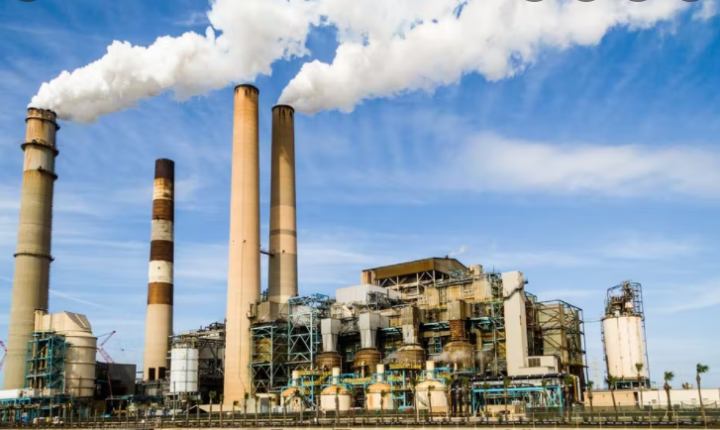On April 4, the United Nations Intergovernmental Panel on Climate Change (IPCC) released the third part of its sixth assessment report on climate change.
Assessment reports by the IPCC usually border on the state of scientific, technical and socio-economic knowledge on climate change, its impacts and future risks, as well as options for reducing the rate at which it is taking place.
The previous two reports had focused on the physical science of climate change, its causes and disastrous impacts globally as well as societies and ecosystems’ capacities to adapt.
Building on these, the latest report provides an assessment of climate change mitigation processes, examines the sources of global emissions and explains developments in emission reduction efforts.
Advertisement
The IPCC advised that countries need to embed mitigation efforts within their wider development context to increase the pace of emissions reductions, and adopt strong climate governance, laws and policies because “policies that shift development pathways towards sustainability can broaden the portfolio of available mitigation responses, and enable the pursuit of synergies with development objectives”.
In this article, TheCable takes a look at some of the key takeaways of the report.
- 1.5⁰C is beyond reach in this decade
The report showed that the global 1.5⁰C goal is beyond reach in this decade. This is because greenhouse gas (GHG) emissions have continued to rise over the years and emissions in the last decade (2010–2019) were higher than in any previous decade — although they grew at a slower rate.
Advertisement
Also, in this decade, global GHG emissions are projected to peak in the years leading up to 2025 and possibly overshoot the 1.5⁰C benchmark, but with immediate action, “rapid and deep GHG emissions reductions will follow throughout 2030, 2040 and 2050”.
The report added that without a strengthening of policies beyond those that were implemented by the end of 2020, GHG emissions are projected to rise beyond 2025, leading to global warming of 3.2 °C by 2100.
- Agriculture, forestry and other land use (AFOLU) can cut down emissions
The report highlighted the need for nature-based solutions as an effective climate change mitigation approach. It stated that agriculture, forestry and other land use (AFOLU) mitigation options, when sustainably implemented, can deliver large-scale GHG emission reductions and enhanced removals.
But, according to the report, there are challenges to this mitigation approach which include “the impacts of climate change, competing demands on land, conflicts with food security and livelihoods, the complexity of land ownership and management systems, and cultural aspects”.
Advertisement
All these could stand as barriers to the implementation and trade-offs of the AFOLU approach but based on country-specifics, using biodiversity conservation methods, employing ecosystem services and encouraging nature-based livelihood options could provide opportunities for implementing this mitigation method.
- Industrial sector needs to adopt new energy, production options
The report stated that to reduce industry emissions and progress towards net-zero GHG emissions, the industrial sector needs to adopt transformational changes in production processes such as “using low and zero GHG electricity, hydrogen, fuels, and carbon management”.
This is to entail coordinated action throughout value chains to promote all mitigation options, including demand management, energy and materials efficiency, circular material flows, as well as abatement technologies.
- Cleaner energy sources have become more affordable:
According to the report, the cost of cleaner and low-emission technologies has “fallen continuously since 2010″.
Advertisement
This, the report said, was made possible by innovation policies that have enabled cost reduction and supported the global adoption of cleaner energy sources. It added that this has “helped overcome the distributional, environmental and social impacts potentially associated with global diffusion of low-emission technologies”.
Giving clearer estimates, the report stated that from 2010 to 2019, there have been sustained decreases in the unit costs of solar energy to about 85 percent; wind energy to 55 percent; and lithium-ion batteries to 85 percent, as well as large increases in their deployment.
Advertisement
But it mentioned that these innovations are lagging in developing countries due to a weaker enabling environment.
- There has to be an end to fossil fuels
The report emphasised the need for an end to fossil fuels if the world is to limit global warming to 2⁰C or below. This will mean that the world “will leave a substantial amount of fossil fuels unburned” and do away with fossil fuel infrastructure.
Advertisement
It added that in forfeiting fossil fuels, the world will have to do away with a total value of unburned fossil fuels and stranded fossil fuel infrastructure projected to be “around 1–4 trillion dollars from 2015 to 2050”.
Therefore, as the low-emission energy sector transition is projected to reduce international trade in fossil fuels, coal assets are projected to be at risk of being stranded before 2030, while oil and gas assets are projected to be more at risk of being stranded toward mid-century.
Advertisement
Add a comment






